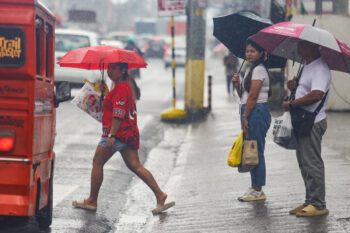MALAYBALAY CITY (MindaNews/7 June) – The Mediator’s Network for Sustainable Peace (Mednet), Inc. is set to present findings of its joint fact-finding committee’s non-partisan survey on the proposed 300-megawatt Pulangi hydroelectric power project in southern Bukidnon and Cotabato provinces.
Caroliza Tulod-Peteros, Mednet mediation service coordinator, told MindaNews Wednesday they have scheduled to present their output on June 15 in Kibawe town. The group has also eyed presentations of the draft in other affected towns but the schedules have yet to be finalized.
Tulod-Peteros refused to give details on their findings but clarified that it is a draft that they will validate in the presentations to representatives from stakeholders.
She hinted that the findings are “concrete statistics” that will portray the demographic profile of the people that will be affected by the proposed project and their views on the project amid the different information and advocacies that came out on the proposed hydroelectric power project.
She added that its contribution is to provide quantifiable information with statistical analysis using scientific method.
But she added that it is not meant to sow more divisions but a tool to “build consensus.”
“Our goal was to facilitate so that people will find means to address conflicts in non-violent ways,” she added.
Mednet has facilitated the formation of a joint fact-finding committee composed of representatives from the proponent, the opponents, and the communities expected to be affected by the proposed project, Malaybalay Bishop Jose Cabantan said last February.
Cabantan told the 42nd Diocesan Pastoral Assembly, the biggest gathering of church leaders in the diocese’s 49 parishes around the province, that the proposed Pulangi V project, along with the peace and order situation in Upper Pulangi, is a concern for the diocese.
He said Mednet, a non-government organization focused on social development in peace and conflict resolution, can help gather the two parties together despite the differences in positions, and talk about it.
Cabantan said that when he assumed in 2011, then Malaybalay Bishop Honesto Pacana had already asked Mednet to come down and help. Mednet came in the picture in 2010 when Pacana was still bishop.
Cabantan told MindaNews he needed to explain Mednet to the church workers because the information about the group’s role was not cascaded down to the communities, especially in southern Bukidnon where the project was proposed to be built. He said a survey has started in the communities of Dangcagan town already.
The 17-member joint committee has initiated the survey among the affected communities to check on the people’s understanding of the proposed project, as well as socio-economic profile of the settlers and indigenous peoples that will be affected, Tulod-Peteros said in February.
Tulod-Peteros told MindaNews via telephone the joint committee came as a result of their conflict mapping where they found among the highlights that there were conflicts in both parties’ basic information on the effect of the project on the people and in their perspectives of development.
The joint fact-finding committee, she added, decided to run the survey to address the conflict in basic information after the results of their conflict mapping was presented to a crowd of at least 500 from the different sectors.
“Hopefully this will lead to learning and understanding,” she said then.
But she clarified that as a participatory process there is a difficult and long work ahead, especially with constraints in the budget.
She said Mednet does not receive any funds from the parties to facilitate.
The bishop recognized that the proposed project “went through some heated debates” and it’s about time to tap the mediation process.
But he clarified that indeed the pace of the project is slow because of some constraints, including funding.
The bishop clarified that the Diocese still has no official position yet on the proposed Pulangi V pending the fact-finding and survey results conducted by Mednet.
Cabantan said this does not stop the parishes and personalities from expressing their own opinion, especially those in the areas to be affected.
The bishop said the survey and the fact-finding initiatives are meant at exploring other options.
He said the public is made to believe that the mega-dam is the only option.
The First Bukidnon Electric Cooperative (Fibeco) and Greenergy Development Corporation, proponents of the project, were able to obtain in June 2011 an endorsement from the Northern Mindanao Regional Development Council (RDC) to the “Department of Energy and other concerned agencies for appropriate action”, according to documents the proponents submitted to the Sangguniang Panlalawigan.
But the RDC, in a resolution approved on June 28, 2011, said it recognized the importance, supports the project, and endorses it for approval “subject to compliance by the proponent in addressing issues and concerns.”
The RDC said the proponents, Fibeco and Greenergy, should update the project feasibility study to incorporate the revised financial and economic analysis of the project; obtain the necessary clearances from the National Commission on Indigenous Peoples (NCIP), the Department of Environment and Natural Resources (DENR), Environment Management Bureau (EMB), and the National Water Resources Board (NWRB).
The council also said the proponents must secure endorsements from the local government units of the provinces of Bukidnon and North Cotabato, the municipality of Kibawe, and the barangays of Sanipon and Pinamula in Kibawe town.
Along with the NWRB application, the proponents have attached endorsements from 20 barangay councils, four municipalities, as well as endorsements from the RDC and the National Economic Development Authority (NEDA).
The NWRB required that the provincial board post the application at its bulletin board. The provincial board, however, will post only the notice if the proponent submits documentary requirements. (Walter I. Balane / MindaNews)
